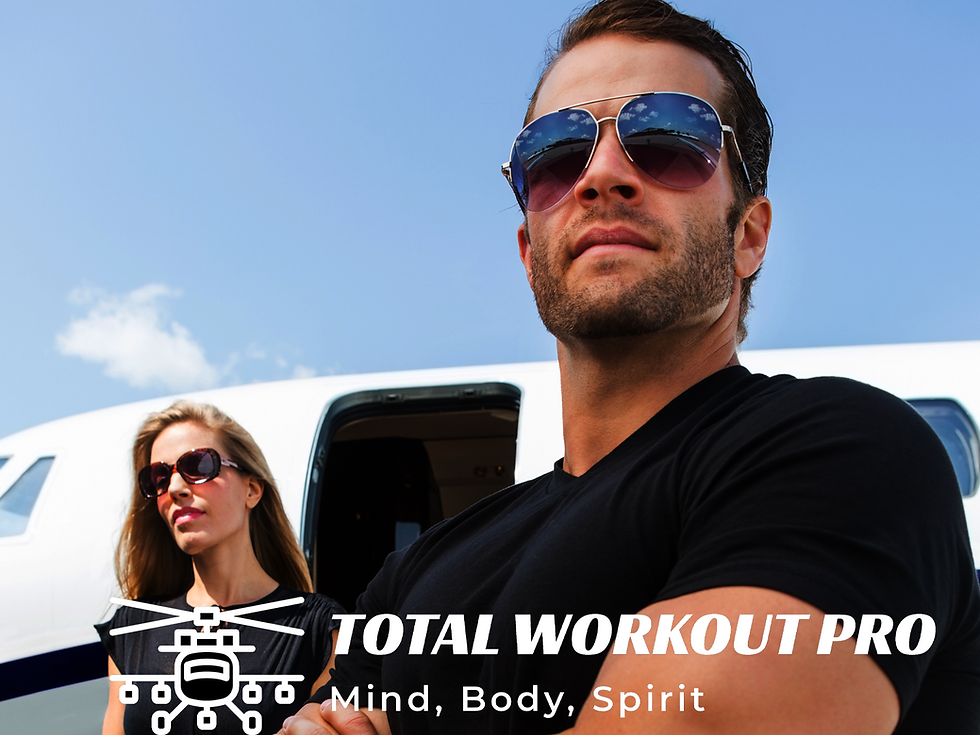Maximizing Functional Fitness: The Ultimate Guide to Task-Specific Training
- Kirk Carlson
- Nov 12, 2021
- 3 min read
Updated: Feb 27, 2024
In the ever-evolving world of fitness, the term "functional fitness" has become a cornerstone for many training regimens, standing out not just as a trend but as a fundamental approach to fitness that emphasizes practical, everyday strength and mobility. This guide delves into the essence of functional fitness, shedding light on its principles, benefits, and how you can tailor your workout to enhance your daily life and activities.

Understanding Functional Fitness
Functional fitness focuses on exercises directly translatable to real-life movements and activities. This training is designed to improve your ability to perform everyday tasks, from carrying groceries and climbing stairs to more demanding physical activities like moving furniture or even sprinting to catch a bus. The goal is to build a body that's strong and flexible but also capable and efficient in the wide range of motions life throws our way.
The Core Principles of Functional Fitness
Movement Over Muscles: Unlike traditional weightlifting, which often isolates specific muscles, functional fitness emphasizes movement patterns that involve multiple joints and muscle groups.
Real-World Applications: Exercises are chosen based on their utility in improving everyday activities, making your workout as practical as it is effective.
Balance and Stability: A significant focus is placed on core strength, balance, and stability, ensuring you can control your body's movements under various conditions.
Adaptability and Scalability: Functional fitness is for everyone, regardless of fitness level. Exercises can be scaled to meet individual needs, challenges, and goals.
Benefits of Functional Fitness
Enhanced Daily Life: The most immediate benefit is the noticeable ease in performing daily tasks, reducing the risk of injury during everyday activities.
Improved Balance and Coordination: Functional fitness enhances your body's balance and coordination by engaging multiple muscle groups.
Increased Strength and Flexibility: This approach promotes overall strength and flexibility, contributing to a well-rounded fitness level.
Mental Clarity and Focus: The dynamic nature of functional exercises requires mental engagement that can help improve focus and cognitive function.
Designing Your Functional Fitness Routine
To maximize the benefits of functional fitness, your routine should be tailored to mimic the movements and challenges of your daily life or specific goals. Here are steps to create an effective functional fitness routine:
Assess Your Daily Activities: Identify the physical demands of your daily life, whether it's lifting heavy objects, extensive walking, or repetitive movements.
Incorporate Compound Movements: Focus on exercises that involve multiple joints and muscle groups, such as squats, lunges, deadlifts, and push-ups.
Prioritize Core Stability: Include exercises that strengthen your core, such as planks, bridges, and rotational movements, to improve balance and stability.
Include Balance Training: Incorporate exercises challenging your balance, like single-leg movements or exercises on unstable surfaces.
Stay Dynamic and Adaptive: Keep your routine dynamic by regularly changing exercises and adapting the intensity to challenge your body continuously.
Functional Fitness Exercises to Get You Started
Squats: Mimic, the motion of sitting and rising from a chair, building leg and core strength.
Deadlifts: Replicate lifting objects from the ground, strengthening your back, legs, and core.
Push-ups: Engage multiple upper body and core muscles, similar to real-life pushing objects.
Lunges: Improve leg strength and balance, essential for walking and climbing stairs.
Planks: Build core stability and endurance, which are crucial for maintaining posture and balance.
Conclusion
Functional fitness transcends traditional workout regimes by enhancing your quality of life through practical and adaptable exercises. By integrating task-specific training into your routine, you achieve a higher level of physical fitness and ensure that your body is prepared and resilient for the daily tasks and unexpected challenges life presents. Remember, the ultimate goal is to look fit and live a fit, healthy, and capable life.



Comments